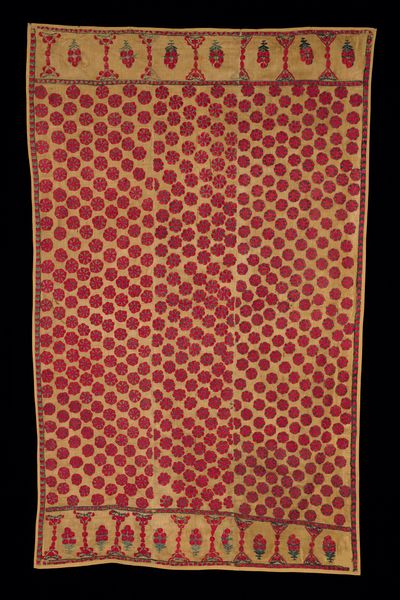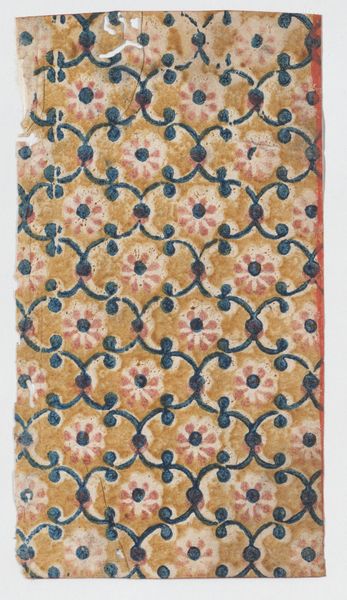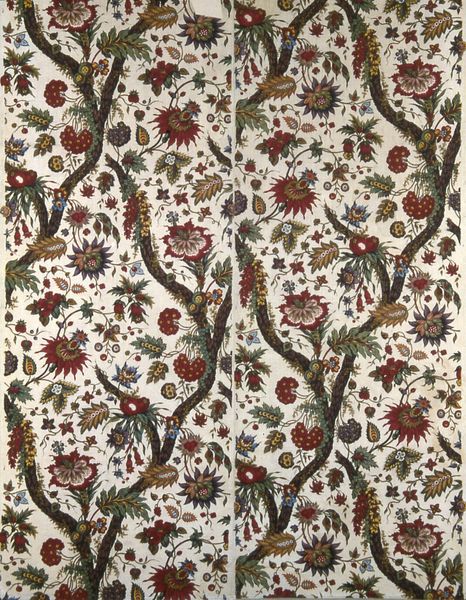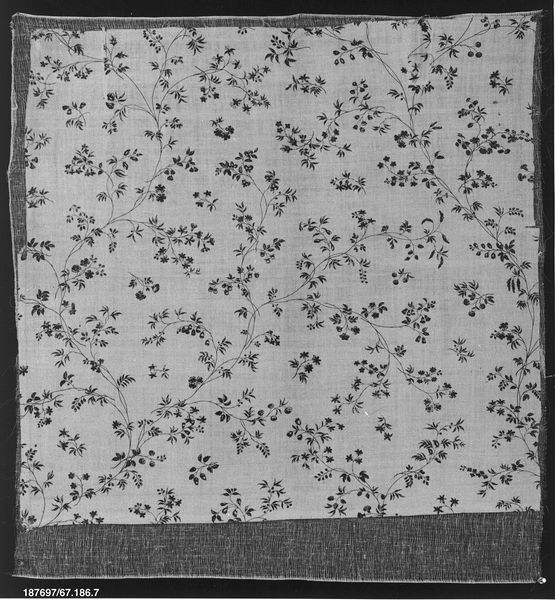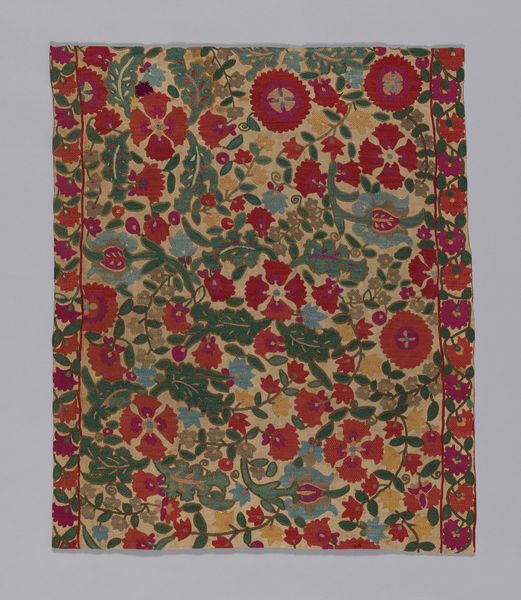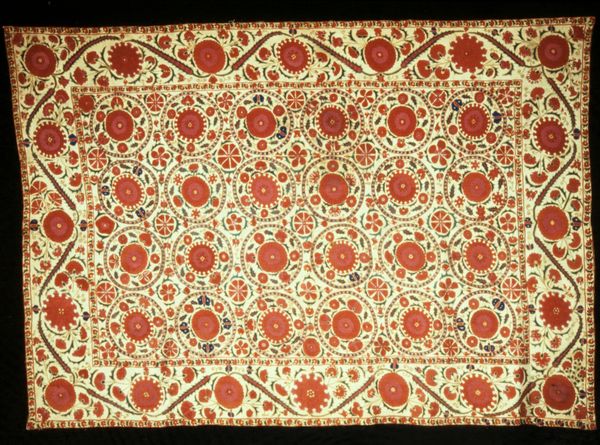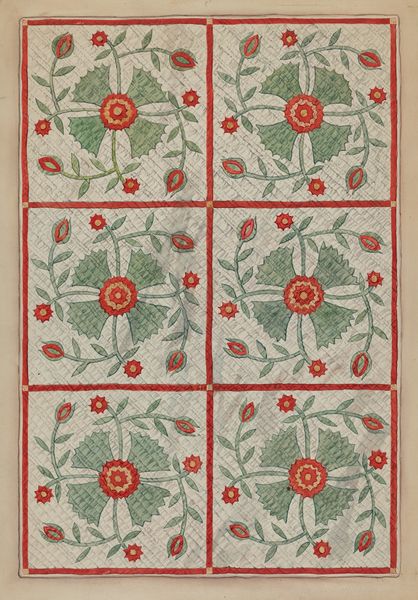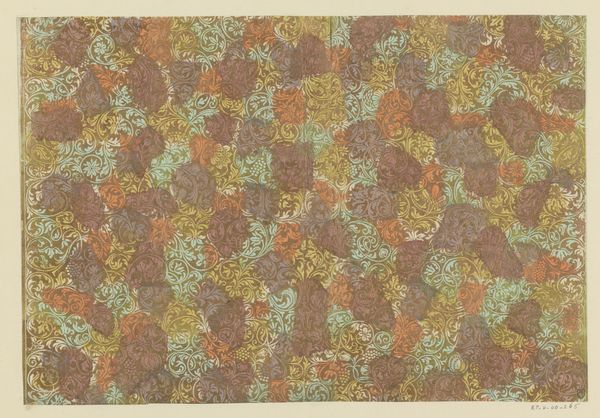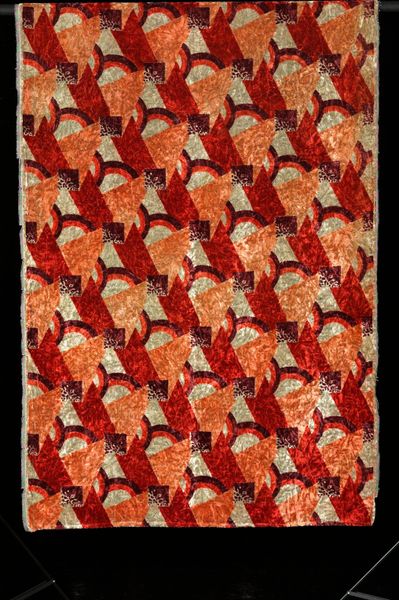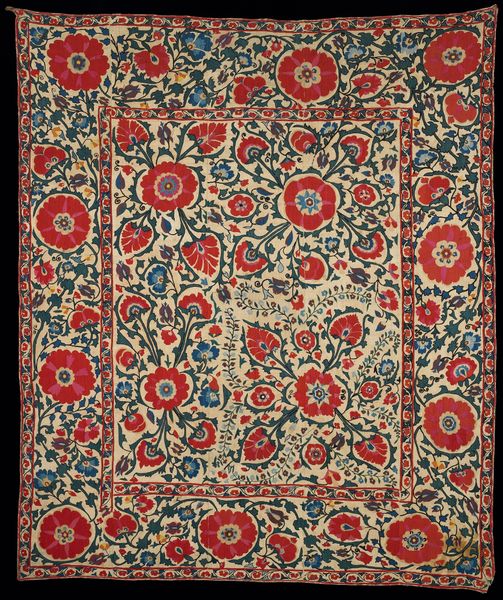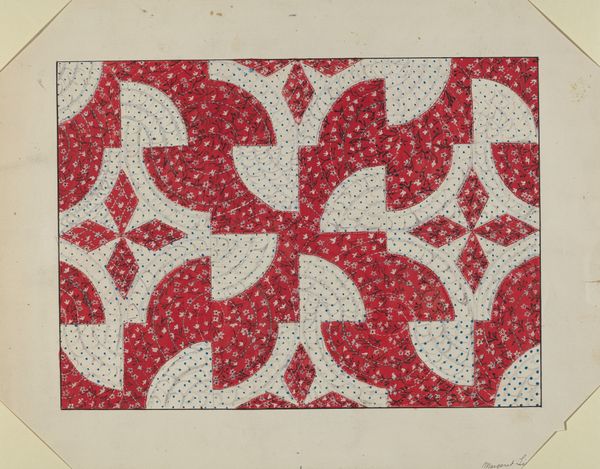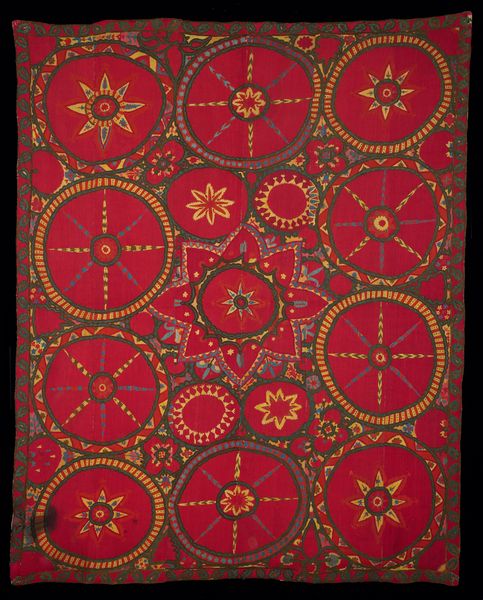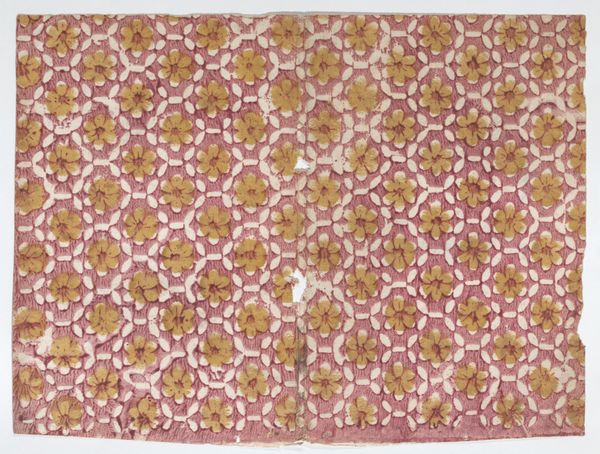
silk, textile
#
silk
#
textile
Dimensions: 211.4 × 124.3 cm (83 1/4 × 49 in.) Repeat: 48.8 × 20.9 cm (19 1/4 × 8 1/4 in.)
Copyright: Public Domain
Editor: Here we have what’s called "Panel (Furnishing Fabric)," a textile weaving of mixed media from possibly between 1644 and 1911. The repeat pattern is really visually striking! I’m curious – how would you approach understanding this kind of textile? Curator: Well, immediately, I'm drawn to the materiality of it. “Furnishing Fabric” suggests function and utility. What labor went into weaving this? The choice of materials would tell us much about the intended market and its consumption – was this for the wealthy, or made more accessibly? Editor: That's interesting, I didn’t consider its use, only really seeing its visual appearance. What do you mean about market? Curator: Thinking about its creation helps, not just its appreciation. Who had access to these dyes and weaving techniques? Was it mass-produced or something more individualized, maybe artisanal? The tension between craft and industry is quite relevant here. These dense patterns also played a significant role. Does the pattern repeat seem machine made? Or are there irregularities that would denote human hand? Editor: That’s fascinating – I was looking at the colors, but considering the means of production opens up a whole new layer of interpretation. The date range is also incredibly broad. I wonder if examining the weave and materials closely would help to pinpoint it more accurately, or understand if its techniques that span different centuries? Curator: Exactly. And where was it likely produced? Thinking about access to raw materials will help understand global trade at that time, too. Editor: It makes me realize how much the "what" is linked to the "how" and "why" it was made! Thanks for this perspective. Curator: Likewise. Thinking about how material circumstances give shape to aesthetics—that's key to my understanding.
Comments
No comments
Be the first to comment and join the conversation on the ultimate creative platform.
